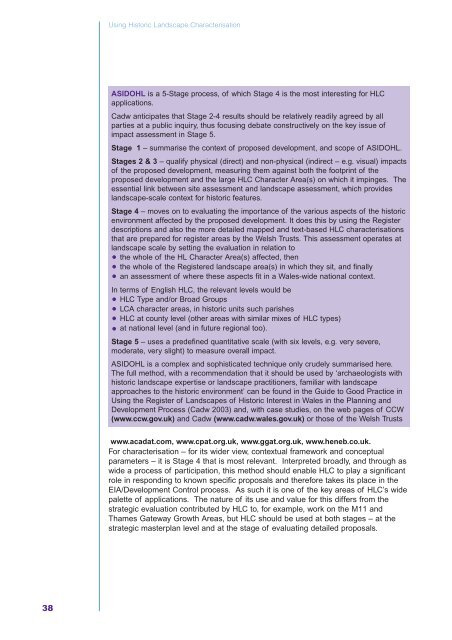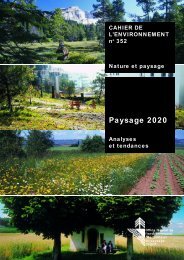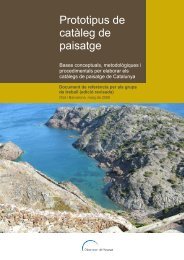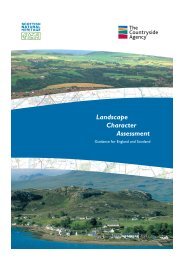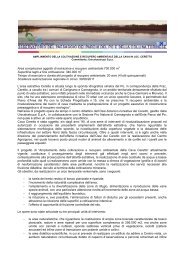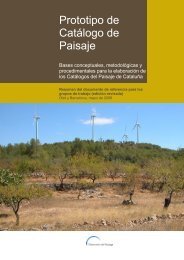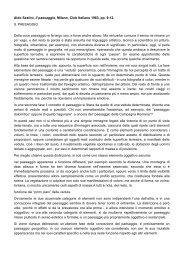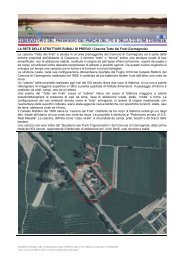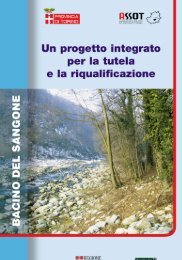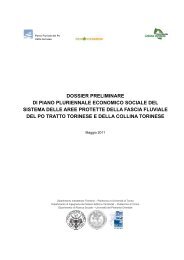Using Historic Landscape Characterisation
Using Historic Landscape Characterisation
Using Historic Landscape Characterisation
Create successful ePaper yourself
Turn your PDF publications into a flip-book with our unique Google optimized e-Paper software.
<strong>Using</strong> <strong>Historic</strong> <strong>Landscape</strong> <strong>Characterisation</strong><br />
ASIDOHL is a 5-Stage process, of which Stage 4 is the most interesting for HLC<br />
applications.<br />
Cadw anticipates that Stage 2-4 results should be relatively readily agreed by all<br />
parties at a public inquiry, thus focusing debate constructively on the key issue of<br />
impact assessment in Stage 5.<br />
Stage 1 – summarise the context of proposed development, and scope of ASIDOHL.<br />
Stages 2 & 3 – qualify physical (direct) and non-physical (indirect – e.g. visual) impacts<br />
of the proposed development, measuring them against both the footprint of the<br />
proposed development and the large HLC Character Area(s) on which it impinges. The<br />
essential link between site assessment and landscape assessment, which provides<br />
landscape-scale context for historic features.<br />
Stage 4 – moves on to evaluating the importance of the various aspects of the historic<br />
environment affected by the proposed development. It does this by using the Register<br />
descriptions and also the more detailed mapped and text-based HLC characterisations<br />
that are prepared for register areas by the Welsh Trusts. This assessment operates at<br />
landscape scale by setting the evaluation in relation to<br />
the whole of the HL Character Area(s) affected, then<br />
the whole of the Registered landscape area(s) in which they sit, and finally<br />
an assessment of where these aspects fit in a Wales-wide national context.<br />
In terms of English HLC, the relevant levels would be<br />
HLC Type and/or Broad Groups<br />
LCA character areas, in historic units such parishes<br />
HLC at county level (other areas with similar mixes of HLC types)<br />
at national level (and in future regional too).<br />
Stage 5 – uses a predefined quantitative scale (with six levels, e.g. very severe,<br />
moderate, very slight) to measure overall impact.<br />
ASIDOHL is a complex and sophisticated technique only crudely summarised here.<br />
The full method, with a recommendation that it should be used by ‘archaeologists with<br />
historic landscape expertise or landscape practitioners, familiar with landscape<br />
approaches to the historic environment’ can be found in the Guide to Good Practice in<br />
<strong>Using</strong> the Register of <strong>Landscape</strong>s of <strong>Historic</strong> Interest in Wales in the Planning and<br />
Development Process (Cadw 2003) and, with case studies, on the web pages of CCW<br />
(www.ccw.gov.uk) and Cadw (www.cadw.wales.gov.uk) or those of the Welsh Trusts<br />
www.acadat.com, www.cpat.org.uk, www.ggat.org.uk, www.heneb.co.uk.<br />
For characterisation – for its wider view, contextual framework and conceptual<br />
parameters – it is Stage 4 that is most relevant. Interpreted broadly, and through as<br />
wide a process of participation, this method should enable HLC to play a significant<br />
role in responding to known specific proposals and therefore takes its place in the<br />
EIA/Development Control process. As such it is one of the key areas of HLC’s wide<br />
palette of applications. The nature of its use and value for this differs from the<br />
strategic evaluation contributed by HLC to, for example, work on the M11 and<br />
Thames Gateway Growth Areas, but HLC should be used at both stages – at the<br />
strategic masterplan level and at the stage of evaluating detailed proposals.<br />
38


